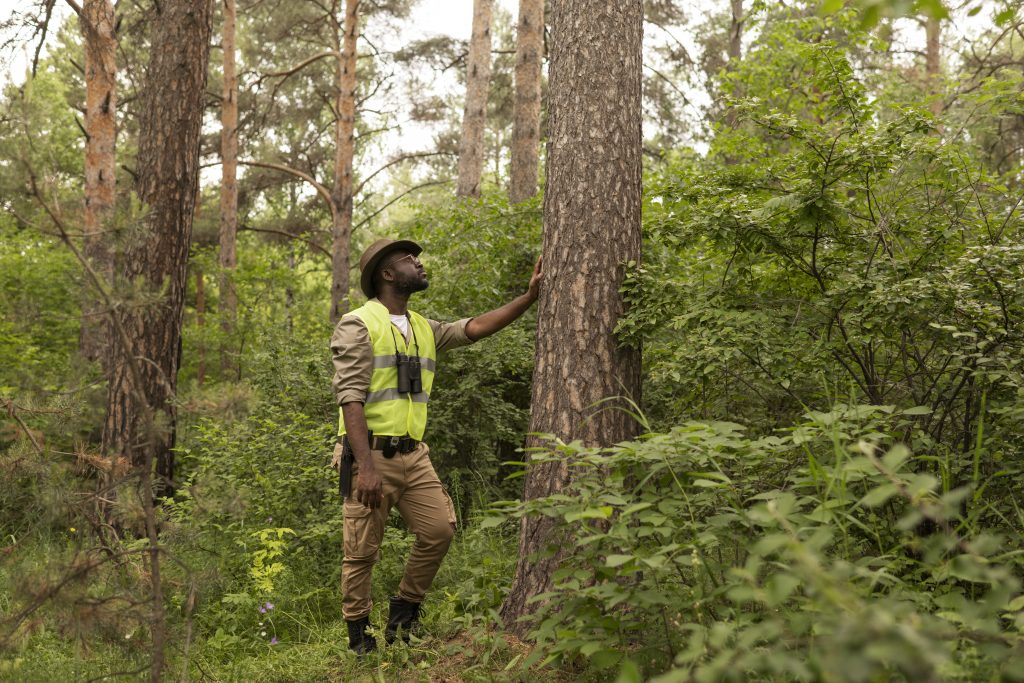Trees are valuable assets in our environment, providing numerous benefits such as shade, oxygen production, and aesthetic appeal. However, there are several myths and misconceptions surrounding tree care and maintenance. It is important to dispel these myths to ensure that trees are properly cared for and to promote their health and longevity. Here are some common myths about tree care and maintenance:

• Trees don’t require regular maintenance. Reality: While trees are generally low-maintenance compared to other plants, they still require regular care. Pruning, watering, and occasional inspections are necessary to ensure their health and safety. Proper maintenance practices promote strong tree structures, prevent diseases, and mitigate potential hazards.
• Pruning a tree harms it. Reality: Pruning is an essential part of tree maintenance and, when done correctly, can be beneficial. Pruning helps remove dead or diseased branches, improves tree structure, and enhances overall aesthetics. However, improper pruning techniques or excessive removal of healthy branches can harm the tree. It is important to follow pruning guidelines or consult with an arborist for proper techniques.
• Trees should be topped to control their height. Reality: Tree topping, the practice of indiscriminately cutting off the top branches, is extremely harmful to trees. It weakens their structure, promotes the growth of weak, fast-growing branches, and makes trees more susceptible to diseases and pests. Instead, proper pruning techniques, such as crown reduction or selective thinning, should be employed to maintain the tree’s health and appearance.
• Trees can heal their wounds. Reality: Contrary to popular belief, trees cannot “heal” their wounds in the same way humans do. Instead, they compartmentalize wounds by forming specialized tissues around them. While this process helps prevent the spread of decay, it does not repair the damaged tissue. Therefore, it is crucial to prevent unnecessary wounds and properly care for any existing ones to minimize potential harm to the tree.
• Staking a tree is always necessary. Reality: Staking is only necessary for young, newly planted trees with weak root systems or those at risk of being uprooted by wind or other factors. Overstaking or leaving stakes in place for too long can restrict trunk movement and hinder the development of a strong root system. Staking should be done correctly, and the support should be gradually removed once the tree can stand on its own.
• All trees require the same amount of water. Reality: Different tree species have varying water requirements. While some trees may tolerate drought conditions, others need consistent watering. It is important to research the specific water needs of individual tree species and consider local climate conditions before establishing a watering schedule. Factors such as soil type, tree age, and weather patterns also influence water requirements.
Dispelling common myths about tree care and maintenance is crucial for ensuring the health and longevity of our valuable tree resources. By understanding proper practices and debunking misconceptions, we can promote the well-being of trees, maximize their benefits, and create a sustainable environment. When in doubt, it is always recommended to consult with a professional arborist or tree care specialist for guidance on proper tree care techniques.
With so much information in the world today it is hard for homeowners to figure out what is true and what is not, especially in a complicated industry such as tree care. There are a lot of unsafe practices and wives tales out there that are outdated and dangerous to trees and the people who live in their proximity.
Fact: There is only so much you can prune back at one time without severely impacting your tree. Removing too much at one time stresses the tree and can lead to health decline, structural defects, insect infestation, and disease infection. The practice of removing lots of large branches and whole tops of trees is commonly referred to as “Topping”. This is an outdated and harmful practice that will lead to your tree’s death.
Fact: There are many untrained and uncertified “tree cutters” passing themselves off as an arborist. An arborist, specifically an ISA Certified Arborist, is trained in arboriculture and utilizes the ANSI standards to properly do tree work. They have passed an extensive examination covering all facets of arboriculture and understand how best to care for your trees. By not using a Certified Arborist you risk doing more harm to your tree than good.
Fact: Certain insects protect your trees and are good for the environment these are called Beneficial Insects. Take ladybugs for example, these insects feed on aphids and other creatures that harm your trees. There are even Beneficial Insect Release programs that use good insects to fight the bad ones instead of using chemicals.
Dead Branches Will Come Down On Their Own
Fact: Yes, dead branches may eventually fall on their own; however, in our highly populated area it’s very likely they will cause property damage or human injury when they do fall. Dead branches “hangers” are unsafe and should be removed as soon as possible.
Fact: No tree is ever 100% safe. However; trees that typically fall have root structure issues. It’s very common for trees to look healthy but still have root structure issues. This is why it’s important to get your tree examined by an Arborist every so often. They will be able to spot the signs of an unhealthy root system.
Fact: Moving a tree can damage it, especially once the roots have been established, And planting in the wrong location can harm the tree in the future. Check how big your tree’s crown will get and make sure the roots have room to grown 2-3x that width, make sure your full grown tree will not encroach on any power lines or structures, and make sure the spot your planting in has the right soil type and light exposure for the type of tree your planting.
Fact: Although many people love the look of ivy growing on trees, Ivy is a threat to your tree. In fact, these aesthetically appealing vines can actually accelerate rot, steal nutrients from the tree, deprive the tree of sunlight, and cover up structural issues that could cause your tree to fall during a storm.
Fact: Trees do not grow symmetrically. Trees grow towards the light and they will adjust to compensate for being uneven. A leaning tree can worry homeowners, but generally, trees that lean naturally over time are not a cause for concern. However, trees that lean suddenly can be a sign of structural issues. If your tree started leaning after a storm call an Arborist ASAP as it may fall soon.
Fact: Tree branches need to be pruned properly to prevent damage. Limbs that are cut improperly can cause permanent and irreparable damage to your tree.
Fact: During the drought season it is very good to water your trees; however, over watering is not good and can cause root rot. Watering once a week (deep and slow) is better than daily (fast).

Fact: Arboriculture is among the top 5 most dangerous occupations in the U.S and that is for people that know what they are doing and have the right equipment. It gets even more dangerous when done by untrained homeowners. In 2015, the media covered 58 stories of homeowners sustaining serious injury while performing their own tree work; 34 of these cases were fatal. It is always best to hire a tree care company. Even if you hire a tree care company make sure they care about safety and are properly insured. If you hire an uninsured company with poorly trained workers you can be sued if they hurt themselves on your property.
Flush Cutting Is Ideal When Severing A Branch In Order To Optimize The Healing Process Here’s the first thing you need to know about trees: they’re not like people. When trees sustain wounds, they don’t heal in the conventional sense. Trees don’t regenerate tissues to heal their wounds as humans do.
• Instead, trees go through a process of compartmentalization. They generate what is known as wound wood over and around the area of the wound. Flush cutting is a pruning process that gets rid of the branch collar, resulting in a much larger wound in comparison to simply cutting off the branch outside the collar. Flush cutting is not recommended as a pruning technique. It can increase the chance of pathogens worming their way into the tree, rather than optimize its healing.
In some cases, it is necessary to stake a newly planted tree so that it stays upright and its root system firmly establishes underground. However, you need to realize that this has several adverse effects.
• If staking is necessary, the tree should be given enough room for roots and trunk development.
• Furthermore, the staking materials, such as the wires and ties, should be removed after about a year to avoid girdling.
Fact: A number of studies have shown that newly planted trees that weren’t staked tend to develop a more stable and extensive root system as well as better trunk taper. Trunk damage due to staking materials is a common side effect of improper staking.
One of the most common reasons why some experts recommend heavy pruning on newly planted trees is to minimize the amount of water that dissipates from the leaves.
• Although there is some truth to this, it should be noted that trees require a full crown to quickly generate the much needed nutrients they need to induce root development.
Fact: Trees develop better and establish a more extensive root system when they have a fuller crown. It is best to limit pruning to structural training purposes, as well as to the removal of dead or damaged branches.
Admittedly, there is some debate going on in the community about the validity of using tree wraps to protect the trunk of newly planted trees. Sunscald is a common occurrence on barks of trees that are exposed to extreme temperatures. It usually appears on the south or southwest side of young trees.
[geocentric_weather id=”45ff4ccd-3d3f-498e-b0b9-91aaaf766bc4″]
[geocentric_about id=”45ff4ccd-3d3f-498e-b0b9-91aaaf766bc4″]
[geocentric_neighborhoods id=”45ff4ccd-3d3f-498e-b0b9-91aaaf766bc4″]
[geocentric_thingstodo id=”45ff4ccd-3d3f-498e-b0b9-91aaaf766bc4″]
[geocentric_busstops id=”45ff4ccd-3d3f-498e-b0b9-91aaaf766bc4″]
[geocentric_mapembed id=”45ff4ccd-3d3f-498e-b0b9-91aaaf766bc4″]
[geocentric_drivingdirections id=”45ff4ccd-3d3f-498e-b0b9-91aaaf766bc4″]
[geocentric_reviews id=”45ff4ccd-3d3f-498e-b0b9-91aaaf766bc4″]